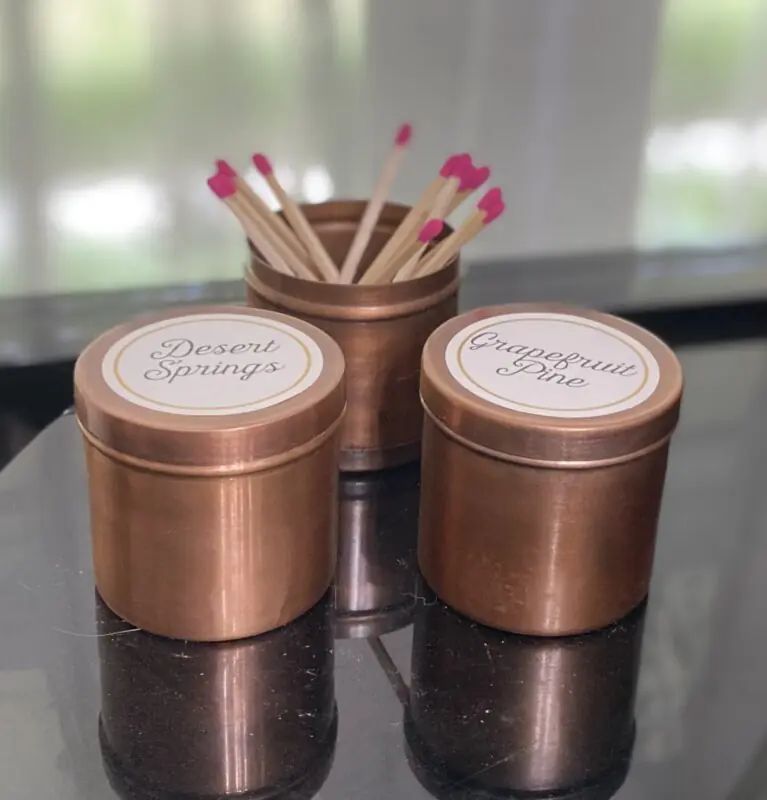Scent Pairing: How to Mix and Match Candles for a Multi-Dimensional Fragrance Experience
Candle enthusiasts and makers alike are discovering the art of scent pairing, a technique that allows for the creation of unique and captivating fragrance experiences. By understanding how to mix and match different candle scents, you can elevate your space with multi-dimensional aromas that evoke various moods and emotions.
Understanding Fragrance Notes
Fragrance notes are the building blocks of any scent. They are typically categorized into three layers: top, middle, and base notes. Here are some common notes used in candle making:
- Top Notes: These are the initial scents that are perceived when the candle is lit. Examples include citrus, mint, and light florals.
- Middle Notes: Also known as heart notes, these emerge after the top notes fade. They include scents like lavender, jasmine, and spices.
- Base Notes: These are the scents that linger after the candle has burned. Common base notes include vanilla, musk, wood, and amber.
Mixing Candle Fragrances
Mixing candle fragrances is a skill that takes practice. Here are some tips to help you create your unique blends:
- Use candle-safe fragrance oils to ensure safety and quality.
- Start with a fragrance wheel to understand the relationships between different scent families.
- Experiment with different ratios. A common starting point is to mix one part of each fragrance.
- Stir the mixture for 90-120 seconds to ensure proper binding of wax and fragrance.
How to Mix and Match Scents for Different Spaces
Different spaces in your home may call for different scent combinations. Here’s how to tailor your scent pairing to various rooms:
Living Room: This is often the heart of the home, where you entertain guests or relax after a long day. A balanced and welcoming scent pairing works best here.
- Pairing Idea: Combine a warm, inviting scent like vanilla with a fresh, vibrant aroma like citrus. This blend creates an atmosphere that is both cozy and energizing, perfect for a living space.
Bedroom: Your bedroom should be a sanctuary, a place where you can unwind and prepare for restful sleep. Scent pairings here should promote relaxation and tranquility.
- Pairing Idea: Mix lavender with chamomile. Lavender is known for its calming properties, while chamomile adds a soft, herbal touch that enhances the soothing effect, making it an ideal combination for winding down.
Bathroom: The bathroom is a space where freshness and cleanliness are key. Scents that evoke a spa-like experience can enhance this environment.
- Pairing Idea: Try blending eucalyptus with peppermint. Eucalyptus provides a refreshing, cooling effect, while peppermint invigorates the senses, making this pairing perfect for a rejuvenating bathroom experience.
Kitchen: In the kitchen, it’s essential to use scents that complement the aromas of food rather than clash with them. Clean, subtle scents work best here.
- Pairing Idea: Pair lemon with rosemary. Lemon cuts through strong cooking smell with its bright, zesty notes, while rosemary adds a touch of herbal warmth, creating a fresh and balanced scent that doesn’t overpower.
Scent Pairing Techniques for Different Moods
Beyond specific rooms, scent pairing can also be used to set the mood or evoke certain emotions. Here are some mood-based scent pairings:
For Relaxation: After a stressful day, a combination of calming and grounding scents can help you unwind.
- Pairing Idea: Blend sandalwood with lavender. Sandalwood’s rich, woody notes provide a grounding base, while lavender’s floral aroma soothes and relaxes, creating a peaceful atmosphere.
For Energy: If you need a boost of energy or want to create an invigorating environment, look for fresh and uplifting scents.
- Pairing Idea: Combine grapefruit with mint. The citrusy brightness of grapefruit paired with the crispness of mint makes for an energizing scent that’s perfect for mornings or workspaces.
For Romance: To set a romantic mood, opt for warm, sensual scents that create an intimate ambiance.
- Pairing Idea: Mix rose with amber. The classic floral scent of rose is enhanced by amber’s deep, musky notes, creating a luxurious and romantic atmosphere.
For Creativity: If you’re looking to inspire creativity or focus, try pairing scents that stimulate the mind without being overwhelming.
- Pairing Idea: Pair bergamot with cedarwood. Bergamot’s citrusy sharpness awakens the senses, while cedarwood adds a calming, earthy balance, making this duo perfect for a creative workspace.
Layering Scents: The Art of Timing
When layering multiple scents, timing is everything. Start by lighting the base scent, which should be the stronger or more grounding fragrance. After a few minutes, light the second candle, which will add complexity and depth. This staggered lighting allows the scents to blend more naturally, creating a seamless transition between fragrances.
For a three-candle setup, consider adding a top note after the first two have blended. This final scent should be the lightest and most delicate, adding a finishing touch to the overall aroma.
Experimenting with Seasonal Scents
Seasonal shifts offer the perfect opportunity to explore new scent combinations. As temperatures change, so do our fragrance preferences. Here are some enticing ideas for each season:
- Spring: Fresh and floral scents herald new beginnings. – Pair Jasmine and green tea for a refreshing, clean aroma.
- Summer: Light, airy fragrances keep things cool. – Blend coconut and lime for a tropical beach vibe.
- Autumn: Warm, spicy notes complement cozy interiors. – Mix cinnamon and pumpkin spice for fall comfort.
- Winter: Rich, woodsy scents bring warmth to cold days. – Combine pine and clove for a festive holiday feel.
Conclusion
Creating a multi-dimensional fragrance experience through candle mixing is an art that can transform your space and elevate your mood. By understanding fragrance notes, experimenting with combinations, and following best practices, you can craft candles that are uniquely yours. Happy candle-making!
Read More About Scented Candles:
- Exploring the Fragrance Market for 2025
- Tips to Make Your Scented Candles Last Longer
- Charming Candle Presents: Thoughtful Gifts for Every Occasion

Karla Butler is the Marketing & Social Media Manager at Himalayan Trading Post and A Touch of Country Magic. With a talent for creating compelling content and effective marketing strategies, Karla excels in building strong connections between brands and their audiences. When she’s not working, Karla enjoys crafting, channeling her creativity into handmade projects that add a personal touch to her life and home.

